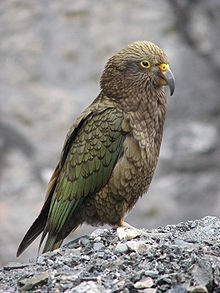
Back Intelligensie by voëls Afrikaans Intel·ligència dels ocells Catalan Birda inteligento Esperanto Inteligencia de las aves Spanish هوش پرندگان Persian Intelligence des oiseaux French Kecerdasan burung ID ബേർഡ് ഇന്റലിജൻസ് Malayalam Inteligência em aves Portuguese Inteligența păsărilor Romanian

The difficulty of defining or measuring intelligence in non-human animals makes the subject difficult to study scientifically in birds. In general, birds have relatively large brains compared to their head size. Furthermore, bird brains have two-to-four times the neuron packing density of mammal brains, for higher overall efficiency. The visual and auditory senses are well developed in most species, though the tactile and olfactory senses are well realized only in a few groups. Birds communicate using visual signals as well as through the use of calls and song. The testing of intelligence in birds is therefore usually based on studying responses to sensory stimuli.
The corvids (ravens, crows, jays, magpies, etc.) and psittacines (parrots, macaws, and cockatoos) are often considered the most intelligent birds, and are among the most intelligent animals in general. Pigeons, finches, domestic fowl, and birds of prey have also been common subjects of intelligence studies.